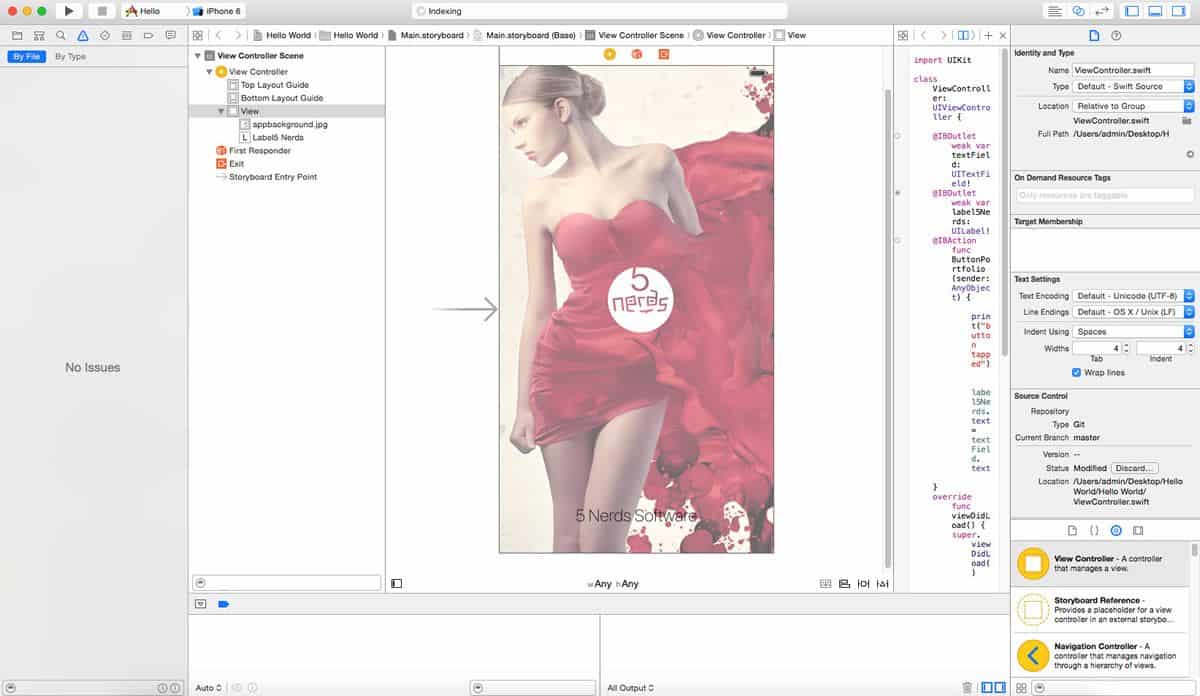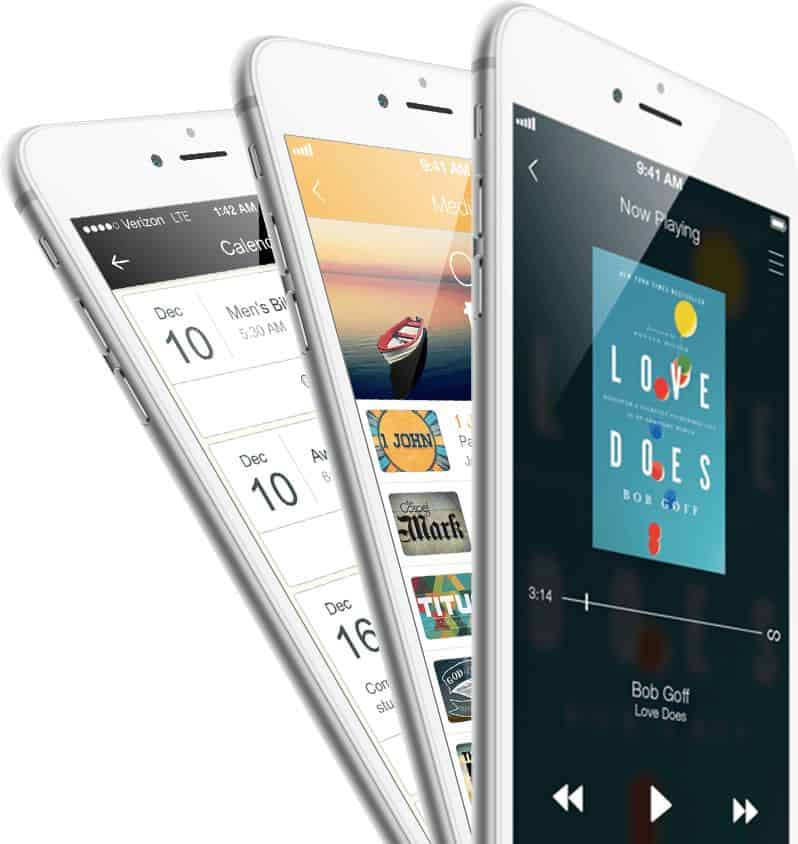Great mobile app ideas can come from anywhere — from experienced designers to high school students to small business owners who have never touched a line of code. If you have a great idea, how do you implement it when you don’t know the difference between Java and Javascript, or Photoshop and Illustrator?
How to Build Mobile Apps — Three Experts Weigh In
We asked three mobile entrepreneurs to share their wisdom on how to build mobile apps without design or development experience, from hiring the right talent to creating the perfect prototype. While each of them knows both the business and technical side of mobile app creation, their expertise is quite diverse:
• Paul Ferro is the President of 5 Nerds Software Development, a design and development agency with a full suite of services ranging from branding and design to building mobile apps from the ground up.
• Andres Max is the founder of Ideaware (@ideawareco), a digital agency specializing in product strategy, UX/UI design and frontend optimization. Prior to striking out as an entrepreneur, Max was a lead UX Designer at Mashable.
• Daniel Hindi is the Chief Technology Officer of BuildFire (@BuildFire), a mobile app creation platform used by over 50,000 businesses. Even if you don’t know the first thing about how to build mobile apps, BuildFire’s WYSIWYG editing tools can help novices create professional looking apps.
These entrepreneurs’ responses made it clear that knowing how to build mobile apps doesn’t necessarily mean becoming a code master or getting your hands dirty with Adobe. With a great idea, a bit of business acumen and a ton of sweat, you could be sitting at the helm of the next Uber. Let’s take a look at their suggestions:
1. Get brainstorming.
The first step in the process came from Paul Ferro who, apart from starting his own business, has helped other entrepreneurs make their visions a reality:
“You have a great idea for a mobile app. It’s the next viral game, the next utility that everyone will use, or the next phase of social expression. Whatever it is, you know it’s great and you want to get it in everyone’s hands. Where do you start?
First, it’s important to flesh out your idea. You might have the basics of the app in your head, but have you thought through some of the small details that can be the difference between a fantastic app and one that’s just okay? It’s important to sit down for a few minutes and think through the entire experience of using the app.
If it’s a game or something similar, you don’t need to have every level in your head, but you should know if there are different levels. Are there in app purchases? Multi-player? Social media connections? As you go through these items in your head, you’ll start to really put the app together mentally and give yourself a head start on overcoming any potential challenges or pitfalls. Or, if you do have someone build the app for you, they will want to understand as much as possible about it before they get started and this will help the process along.”
2. Pitch your idea to friends, family and colleagues to get their feedback.
But everyone thinks their own ideas are brilliant, don’t they? How do you know your mobile app concept is legitimately awesome outside of your head? Turn to your inner circle for a sanity check, advises Ferro:
“Now that you have the idea worked out, it’s time to really put it to the test and see if it’s as great as you’re hoping. There are a lot of good apps out there that do pretty much the same thing, but for one reason or another, one of them will rise to the top and become the favorite. Now, your app doesn’t need to be #1 in the app store to be popular or be profitable. But it does need some visibility.
Take your idea to as many people as you possibly can to get their input on it. Here’s an expert tip: when you’re presenting your idea to others (likely your friends and family), tell them you know someone with an app idea that you have the opportunity to invest in. Then explain the idea. Your friends and family are much more likely to be completely honest about their opinion if they think that the idea is not yours, and that you might actually waste your money investing in a not-so-good app. Ask them if they would use it. If so, why? And if not, why not?
Ask them to poke holes in it. Ask them if they have ever seen anything like it. This approach can honestly be the difference between knowing that you have a great app idea, and knowing you have a group of friends and family that don’t want to hurt your feelings.
If you’ve made the rounds and your idea seems like it has legs, time to get started! This is where you have a couple of choices. You can build it yourself or hire someone.”
3. Even if you can’t build mobile apps, you can build a killer prototype.
Andres Max echoes Ferro’s advice about the importance of researching your mobile app idea to make sure it’s seaworthy. He takes it a step further, though: “I always encourage entrepreneurs to start by doing market research. Dig deep to gauge demand for your idea, what has worked in the past and what hasn’t, then make adjustments as necessary.” You might think, for example, that you’ve come up with a bleeding-edge idea for a unique photography app, only to realize that there’s already something like it on the market. That isn’t necessarily an idea killer — it’s just up to you, at that point, to see how you can do it better.
One of the best ways to make that comparison is, of course, to create a prototype! Says Max, “Once you’ve refined your idea, design and test a prototype. Gather valuable insights from your prototype and build it.” This could be as simple as sketching out a wireframe of your design, but tools like Proto.io can help you create lifelike prototypes without any design or development experience (you can sign up for a free trial of Proto.io here).
4. Decide whether you’ll hire an agency or developer — or learn how to build mobile apps yourself!
The next step, says Ferro, is figuring out who will be responsible for turning your prototype into the actual app. Believe it or not, he says, you may be able to build mobile apps yourself (even without prior experience), provided they’re simple enough:
“Learning how to build mobile apps yourself with no experience can be daunting. But it’s possible. Especially if your idea is what is unique about the app — not the technology itself. Take Flappy Bird for example. The app itself was extremely simple. But the idea was unique and addicting. Now, consider Apple Passbook. The idea is relatively simple, but the technologies used to store your personal information safely, connect with merchants, tap into the fingerprinting technology, etc. are relatively complex.
If you need cutting edge technology in your app that makes use of the device in a way that’s never been done before, then building it yourself might prove difficult. It can take years of experience to know how to leverage all of the power a mobile device has to offer. If you’ve determined that you can tackle the app yourself, great! If you have some programming experience, that will go a long way. But even if you haven’t, there are ways to get up to speed pretty quickly.”
5. Make sure you’re using the right tools to build mobile apps.
But how do you get up to speed? You could either take a crash course in coding (there are many free resources available to do this, like Codecademy) or use a platform to build your mobile app using beginner-friendly tools. BuildFire is one such platform, explains Daniel Hindi:
“What if you have a killer idea, but you have no clue how to build mobile apps? That was the exact problem we aimed to address with our mobile app building platform, BuildFire. We have over 80,000 apps on our platform, from small business owners to large corporations, all developing apps with little to no technical skills. While this is great for simple apps, having no coding experience usually limits you to the canned features sets offered by the platform. BuildFire has addressed this, and will soon be opening up APIs for developers to add onto your existing BuildFire app.
We are finding more and more startups and small businesses starting with our base platform with an extremely low barrier to entry. Once the app has proven its worth, they then solicit third party developers to only develop the missing piece of the puzzle for a tenth of the time and money.”
6. Make sure you’re hiring the right people.
Whether you’re hiring a developer to finish what you’ve started on a platform like BuildFire, or to build mobile apps from scratch, it’s important you find the right fit, says Ferro:
“Now, if you decide to hire someone to build your app, the process is a little easier than it would be if you learned how to build mobile apps on your own. But there is, of course, a cost. Hiring a software firm has benefits over doing it yourself. They have a wealth of experience to tap into, they’re already aware of the pitfalls of app development, they’ll make sure apps are optimized and work quickly, the design will be very usable — I don’t think I need to explain the benefits of hiring a professional.
What you need to do is ensure you’re hiring the right professional. More than anything this means finding a firm that will listen to your idea and fully understand it before starting to write any code. Many firms want to just jump in and start programming and billing you, but that’s not the right way to do it. Interview a few firms to find the right fit. You should feel comfortable working with them, collaborating with them and working through challenges with them. And believe me, there will be challenges!
When you have found the right firm, everything comes together. They immerse themselves in your idea so they can work through kinks, fill in blanks in the idea, propose suggestion and features and provide a high level of service. Great apps are made when a great idea meets a great team to bring it to life.”
Now, Get Out There and Hustle!
Ferro closes us off by reminding entrepreneurs that to build mobile apps is one thing, but to get users to download them is another:
“So you’ve built your app and now you’ve launched it. It doesn’t stop here. Promote it. Talk about it. Share it on social media – everywhere! You need to get the word out. There are a lot of ways to promote your app (in fact, Udemy has courses for this as well) and you should try them all. Tech blogs are always looking for new apps to write about. Tell them about your app. If your app is a utility, figure out the industry that can use your app the most and put it in front of them. Whatever you do, you should always be sharing your app as much as possible.”
We want to hear from you! Are you an entrepreneur who has successfully built mobile apps with little to no experience? What advice would you offer a newbie? Let us know by tweeting us @Protoio!
And remember — you don’t need any design or development experience to create beautiful prototypes with Proto.io. Our drag-and-drop interface is simple enough for beginners, but powerful enough for veteran designers. Give it a shot and sign up for a free 15-day trial!









